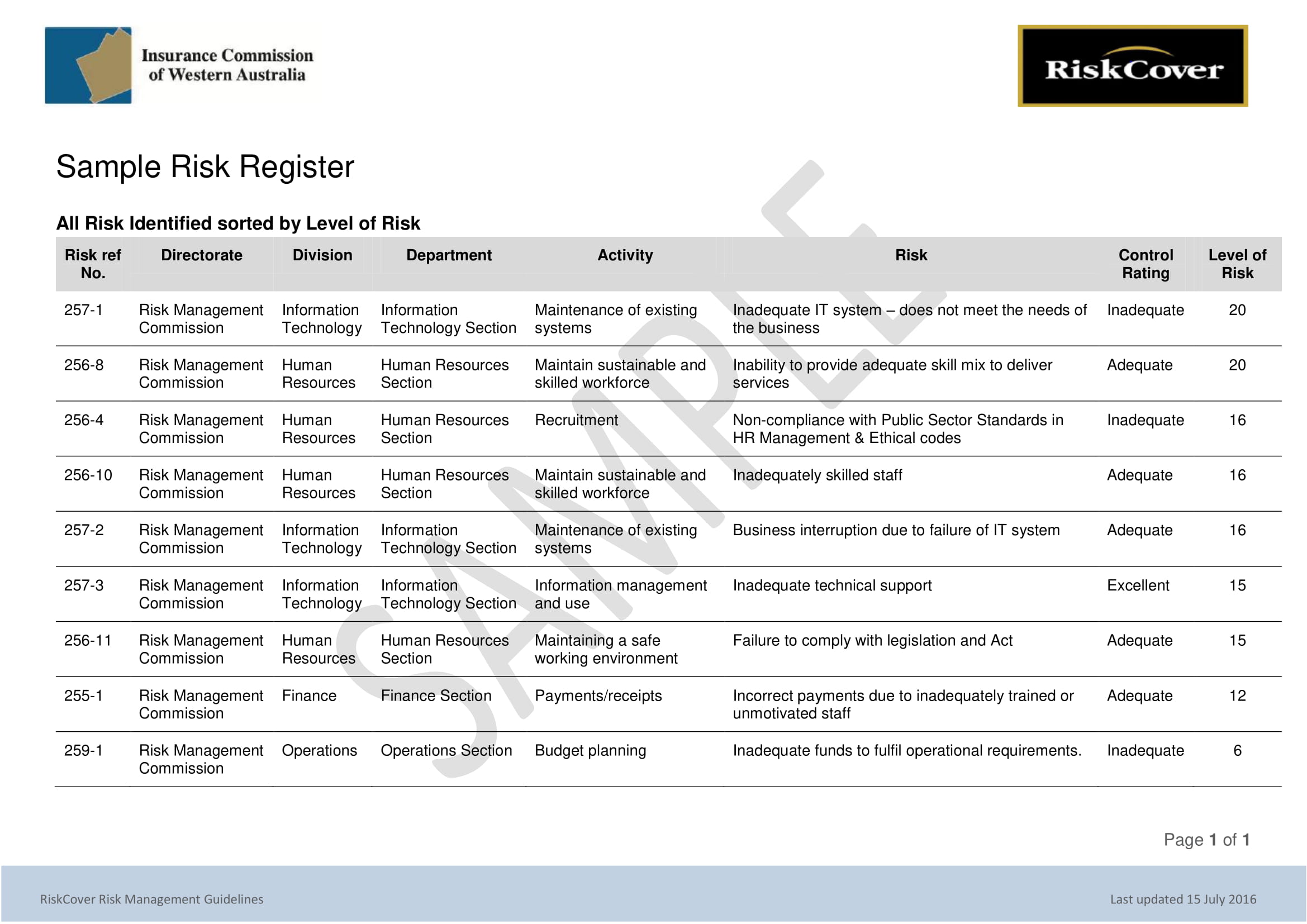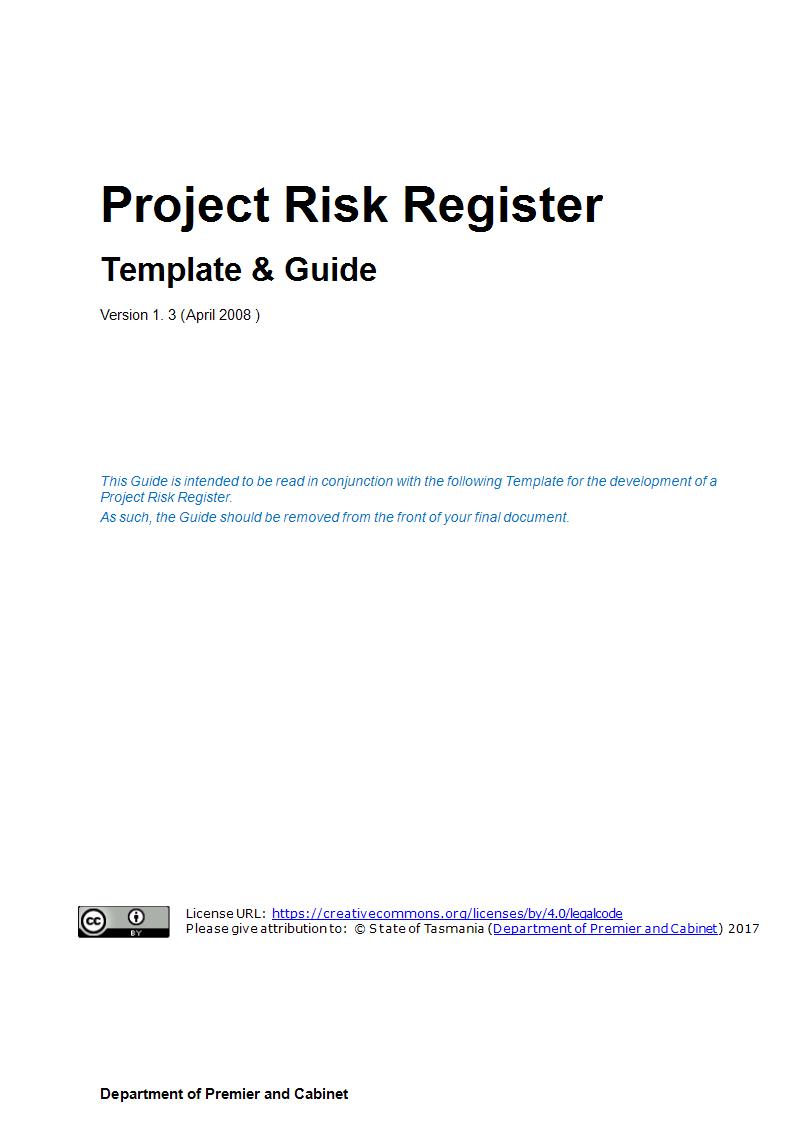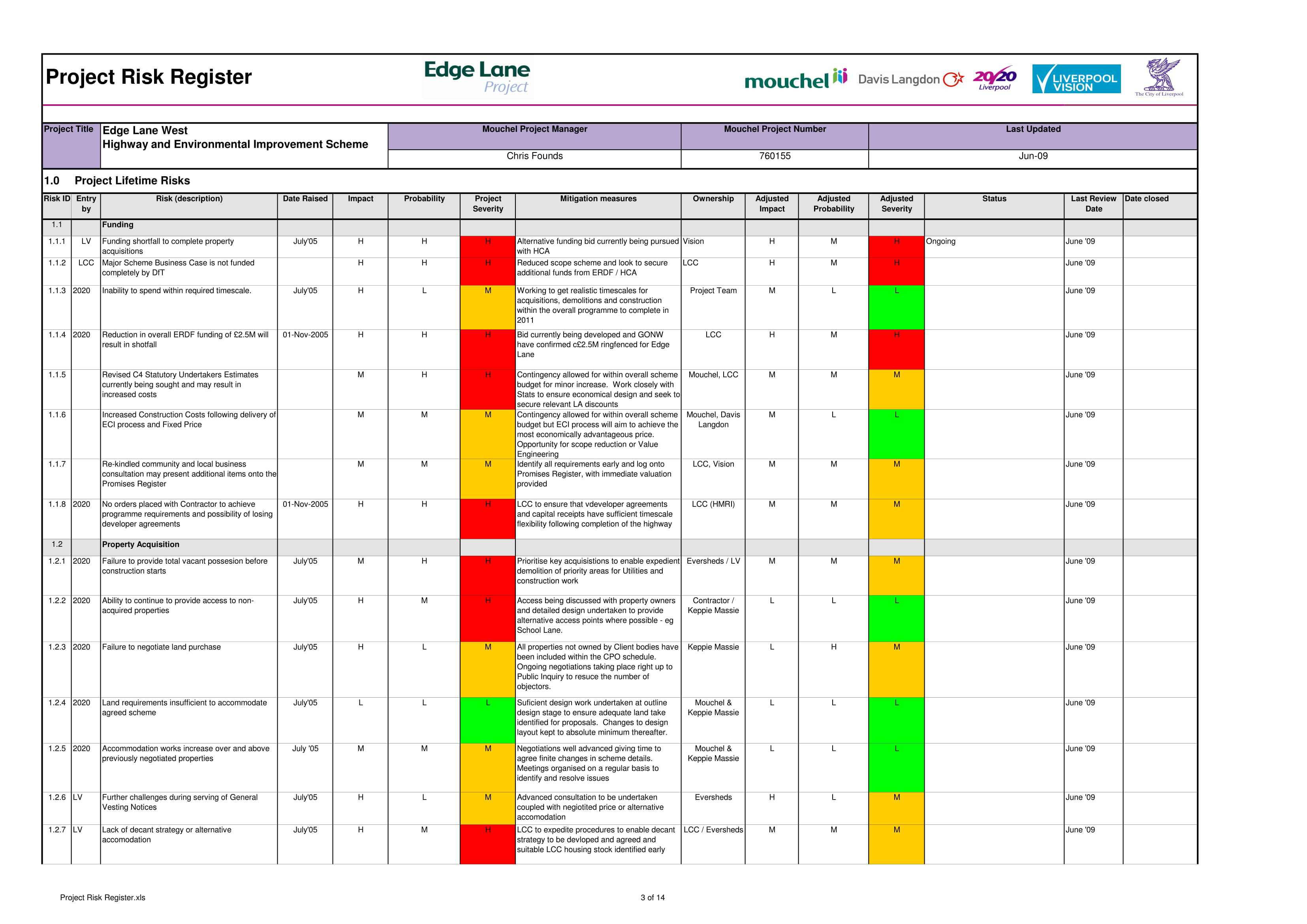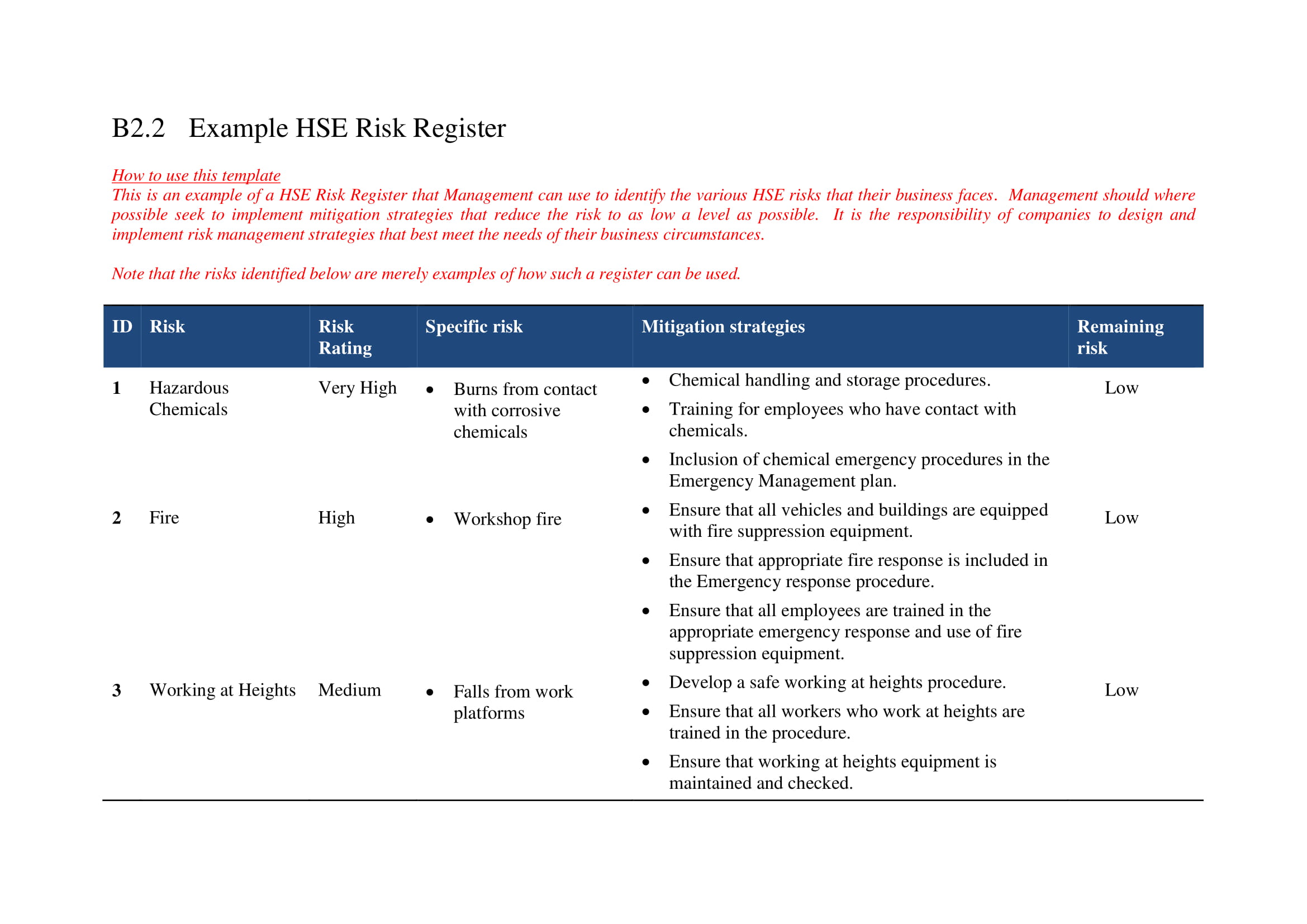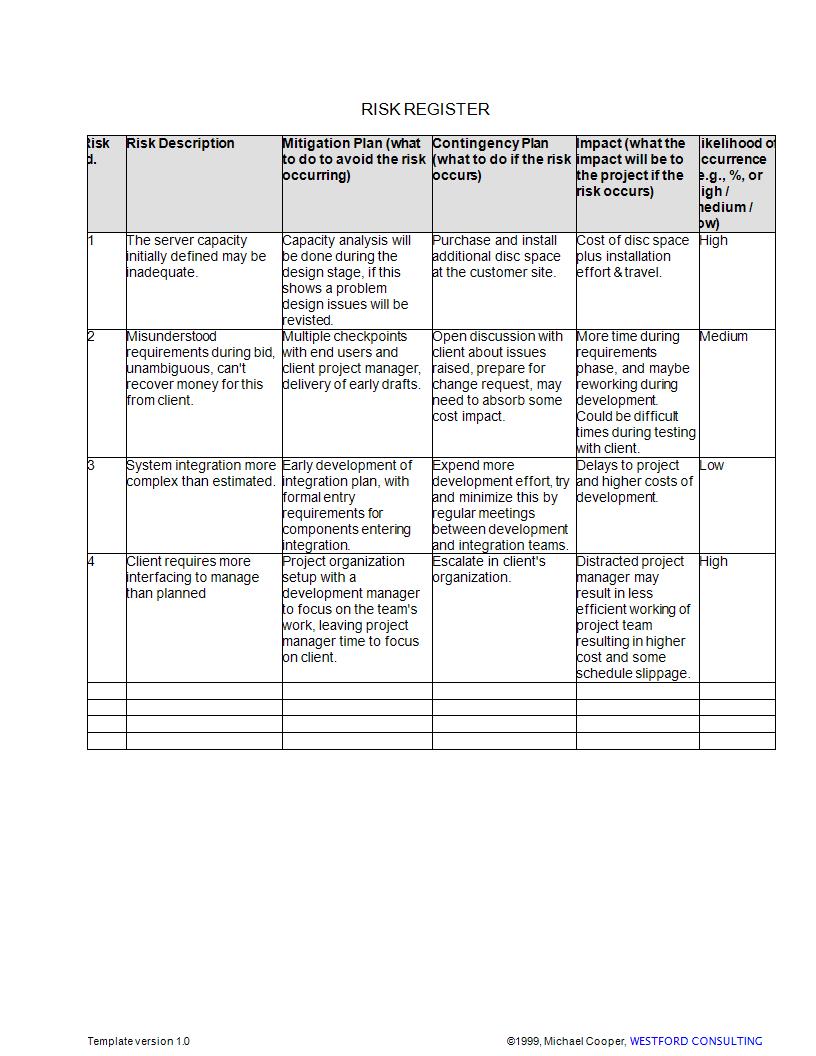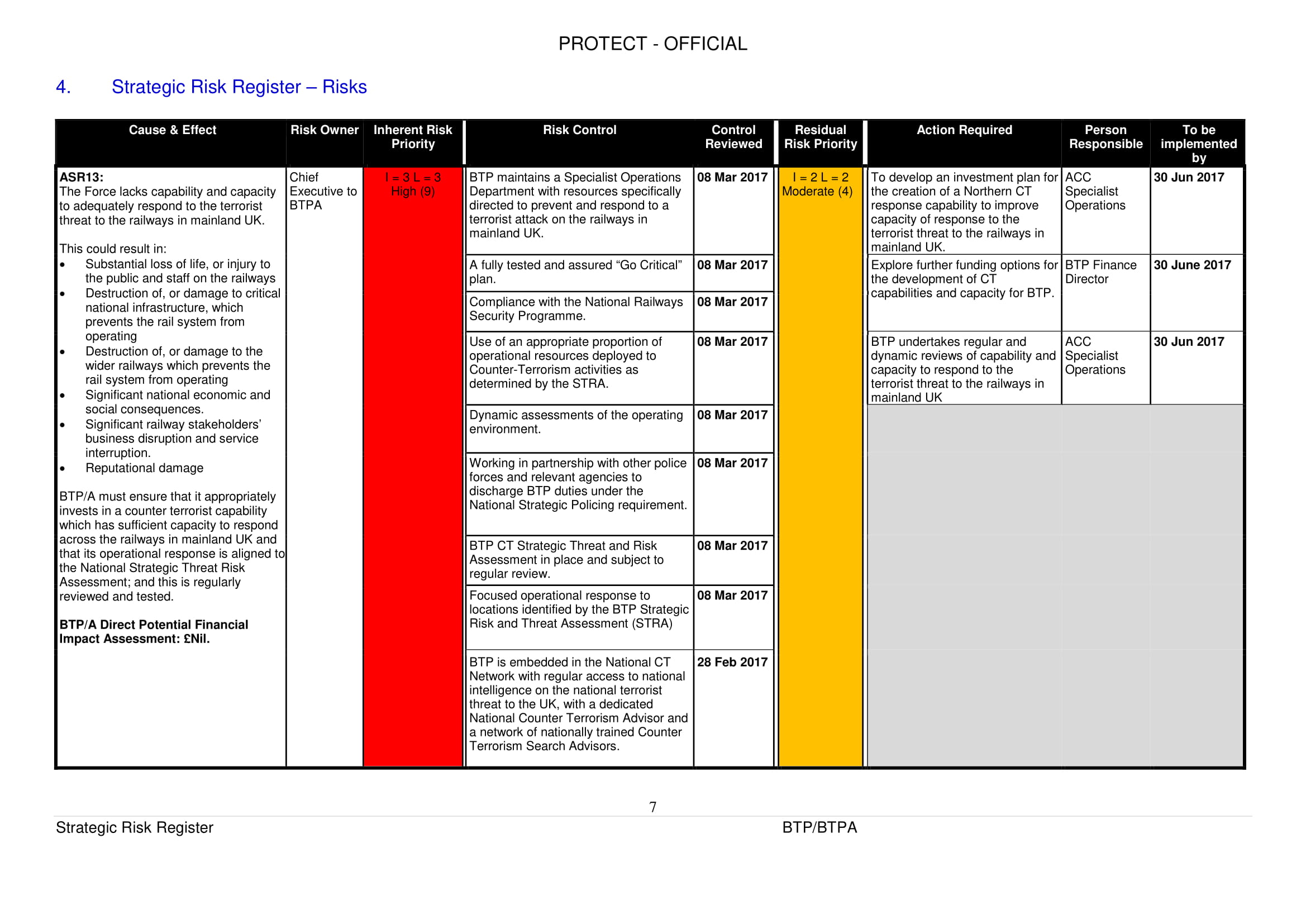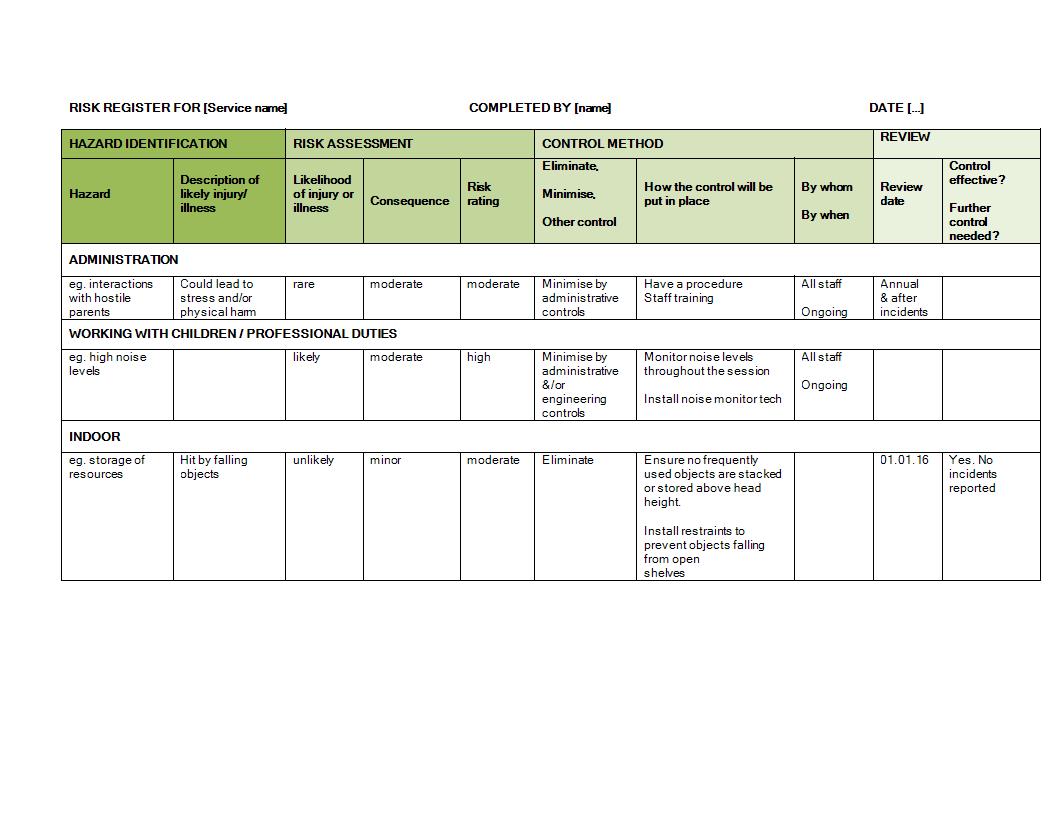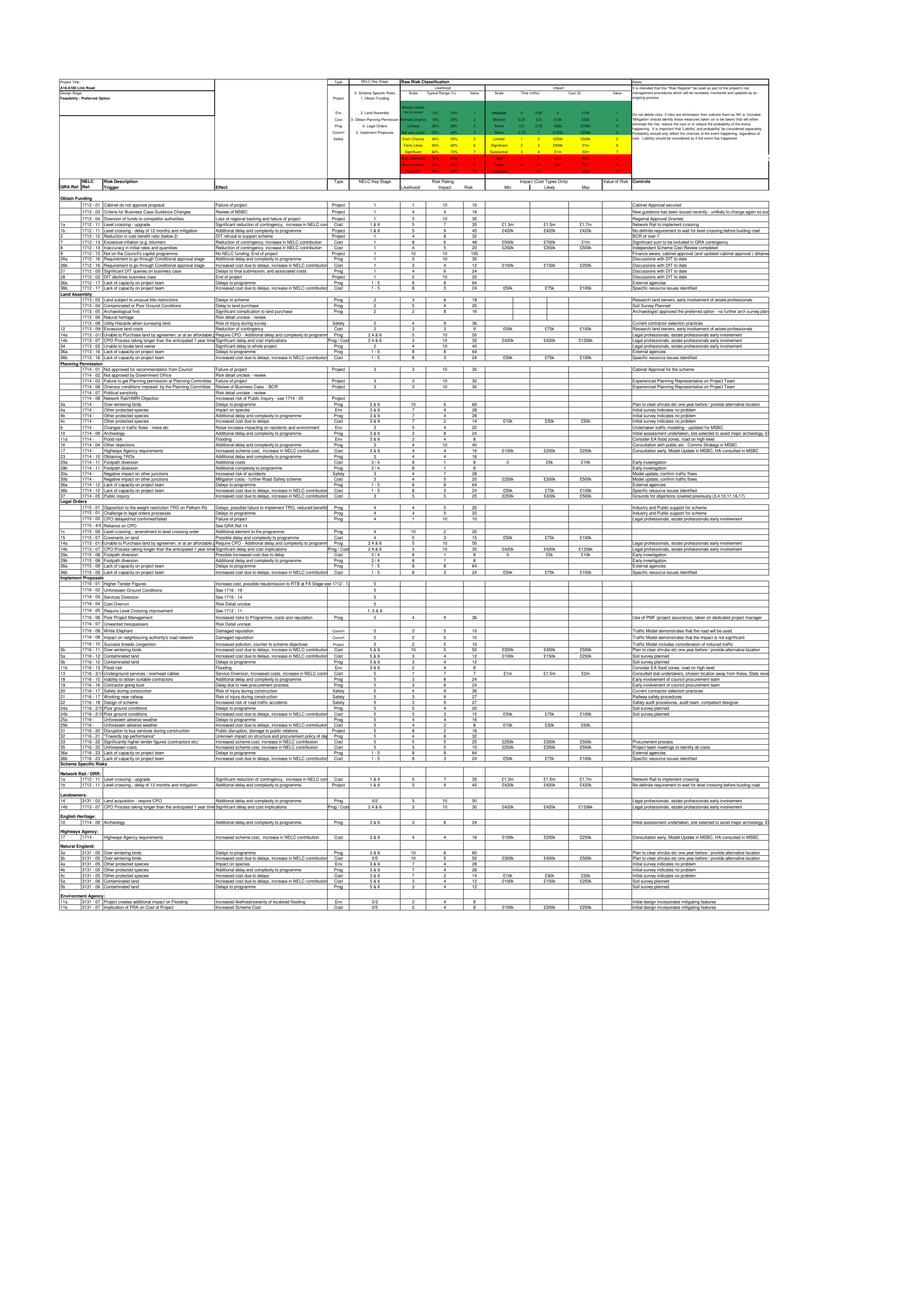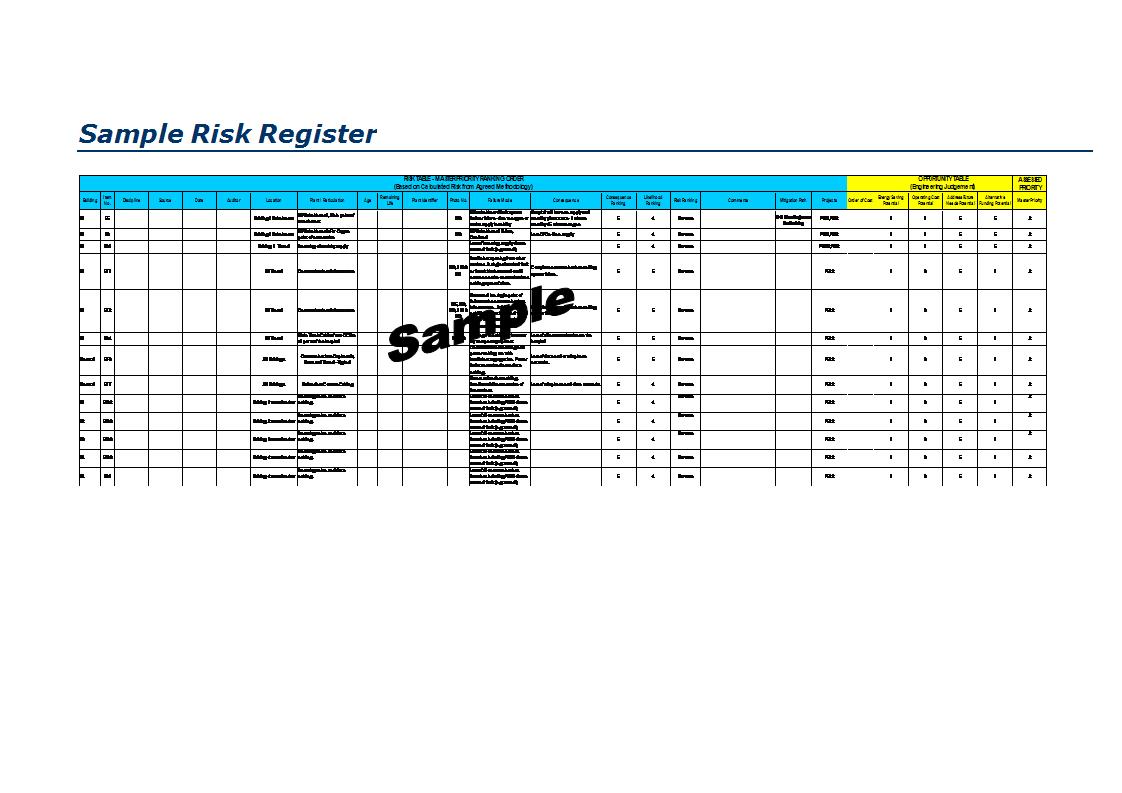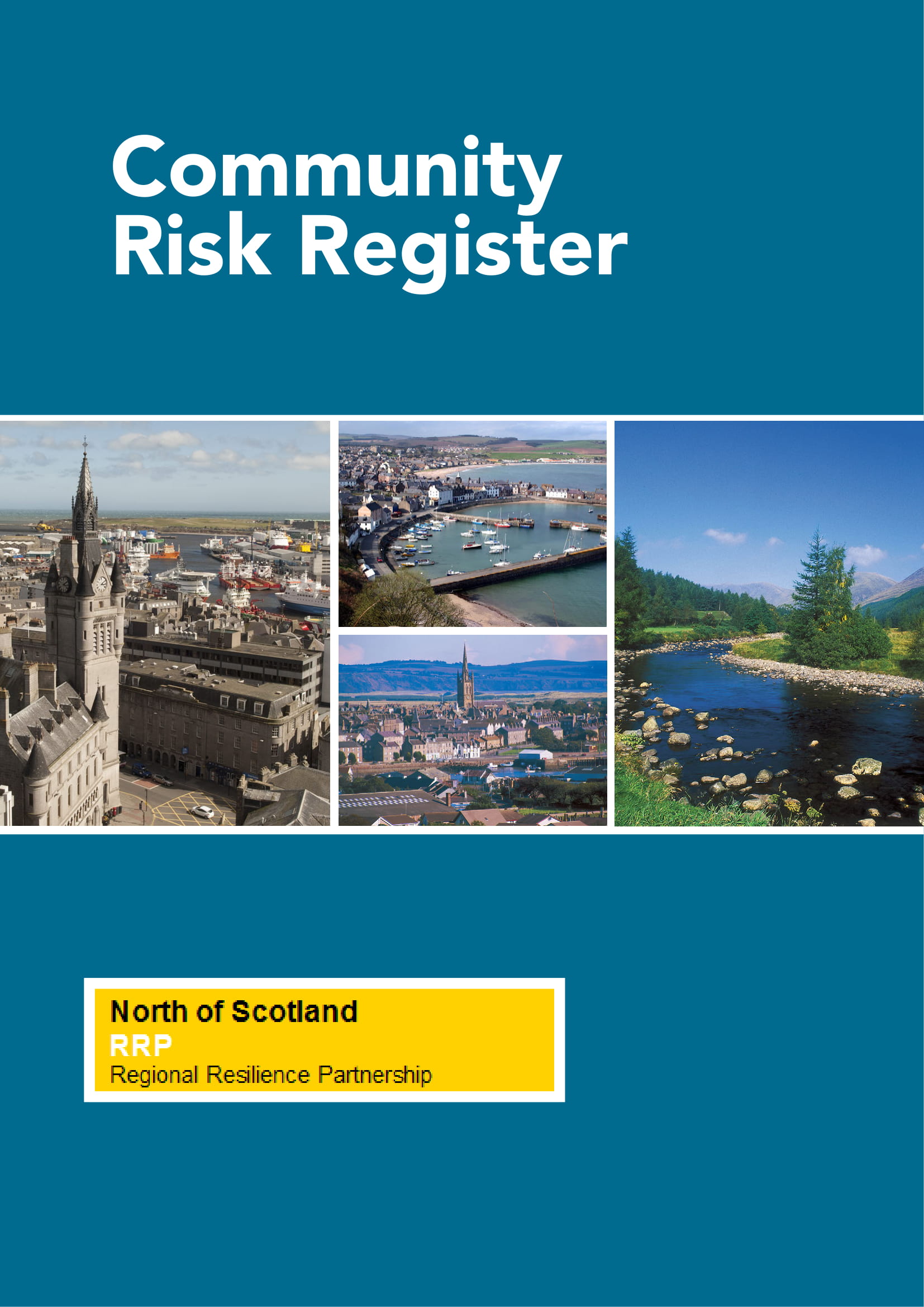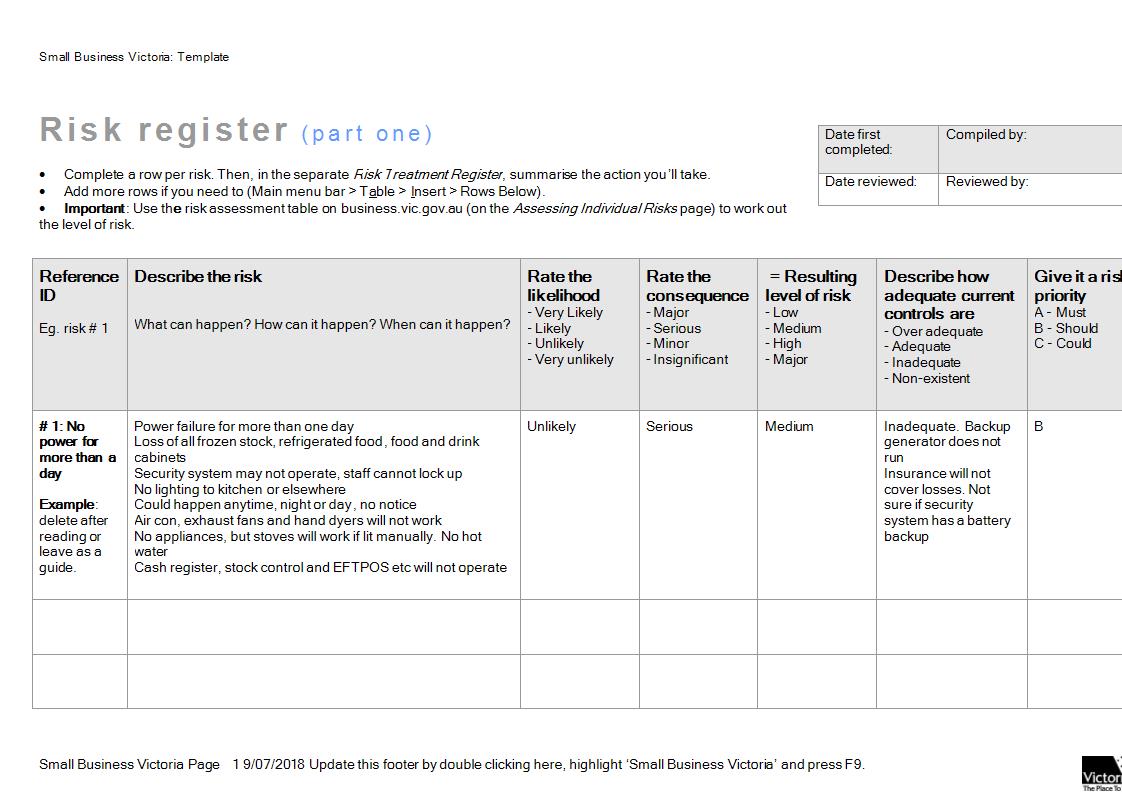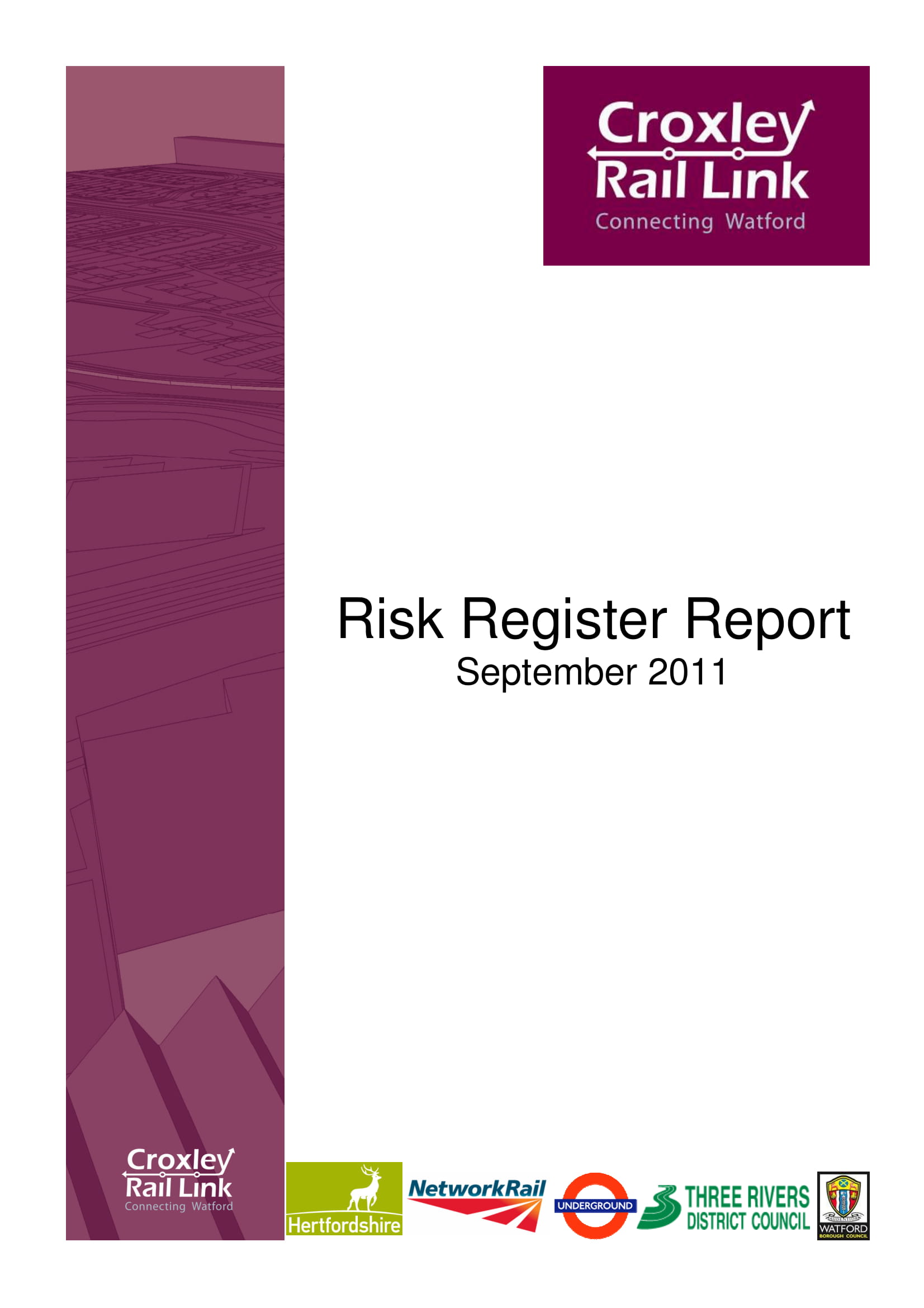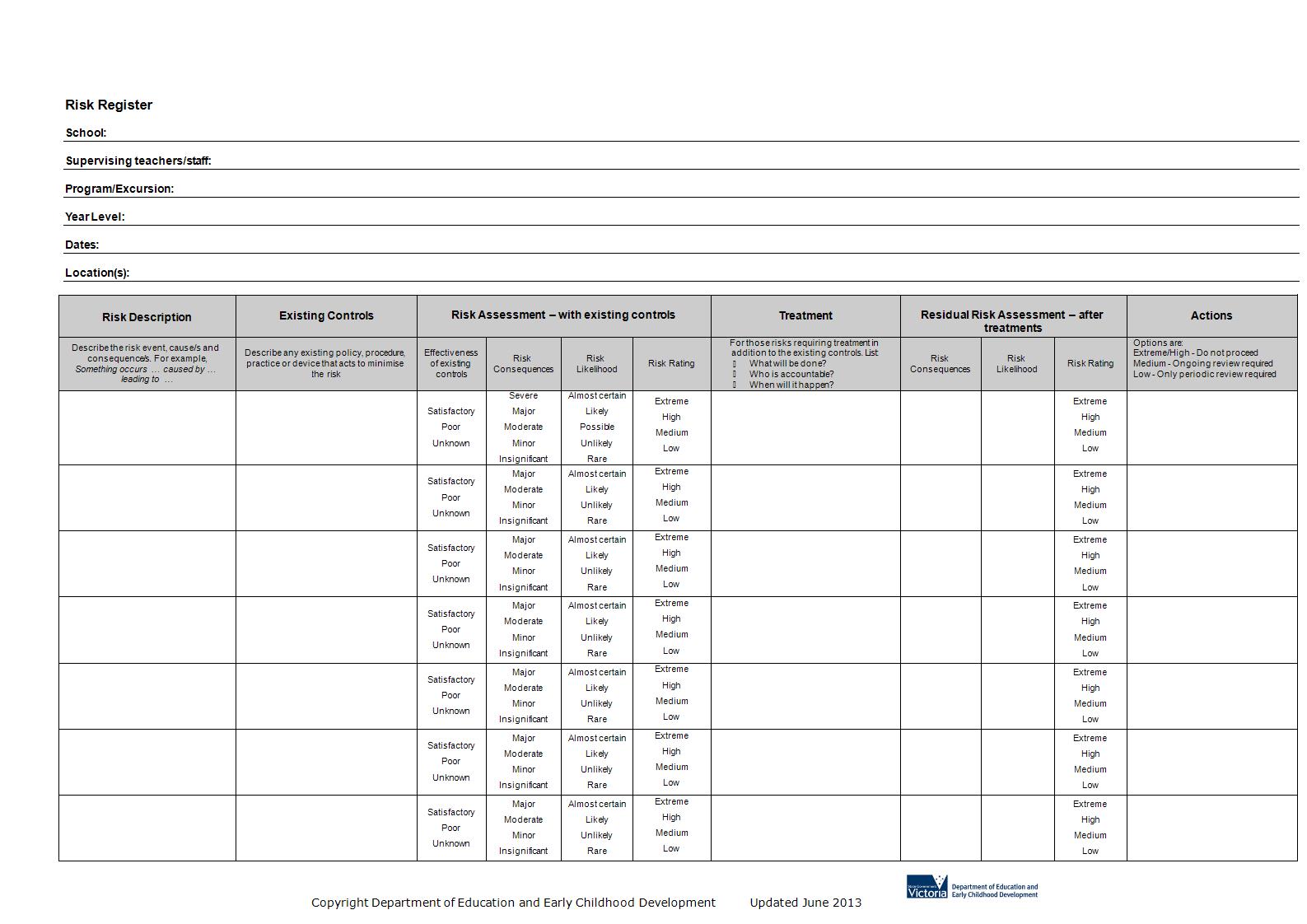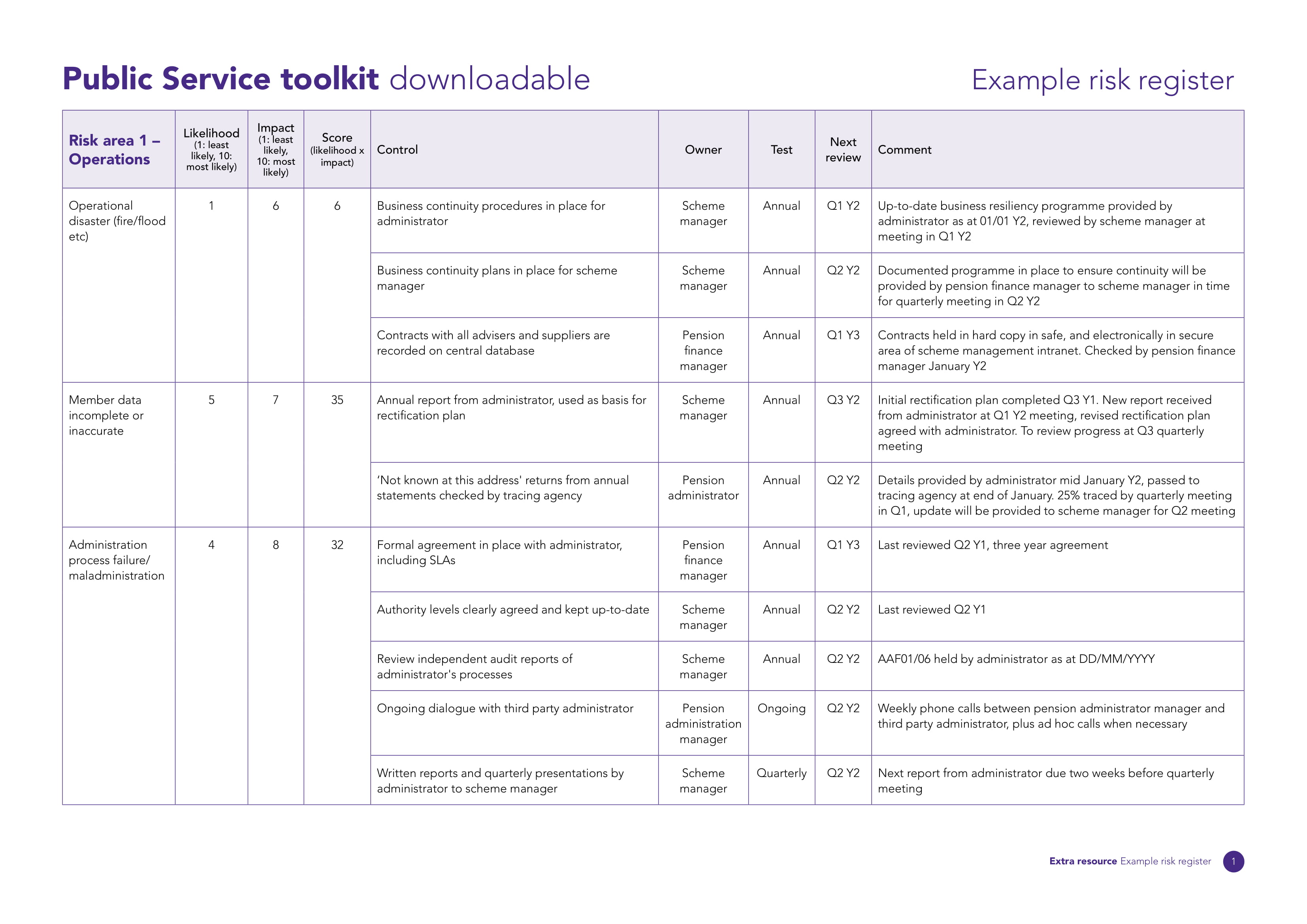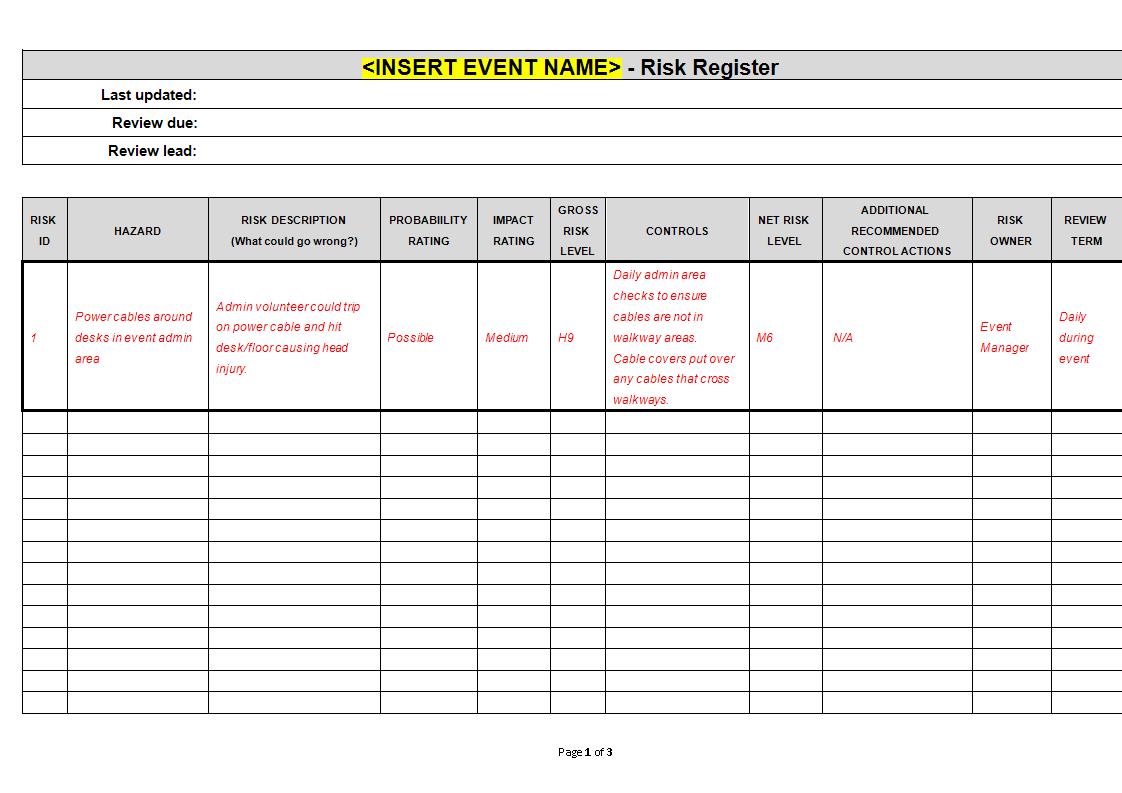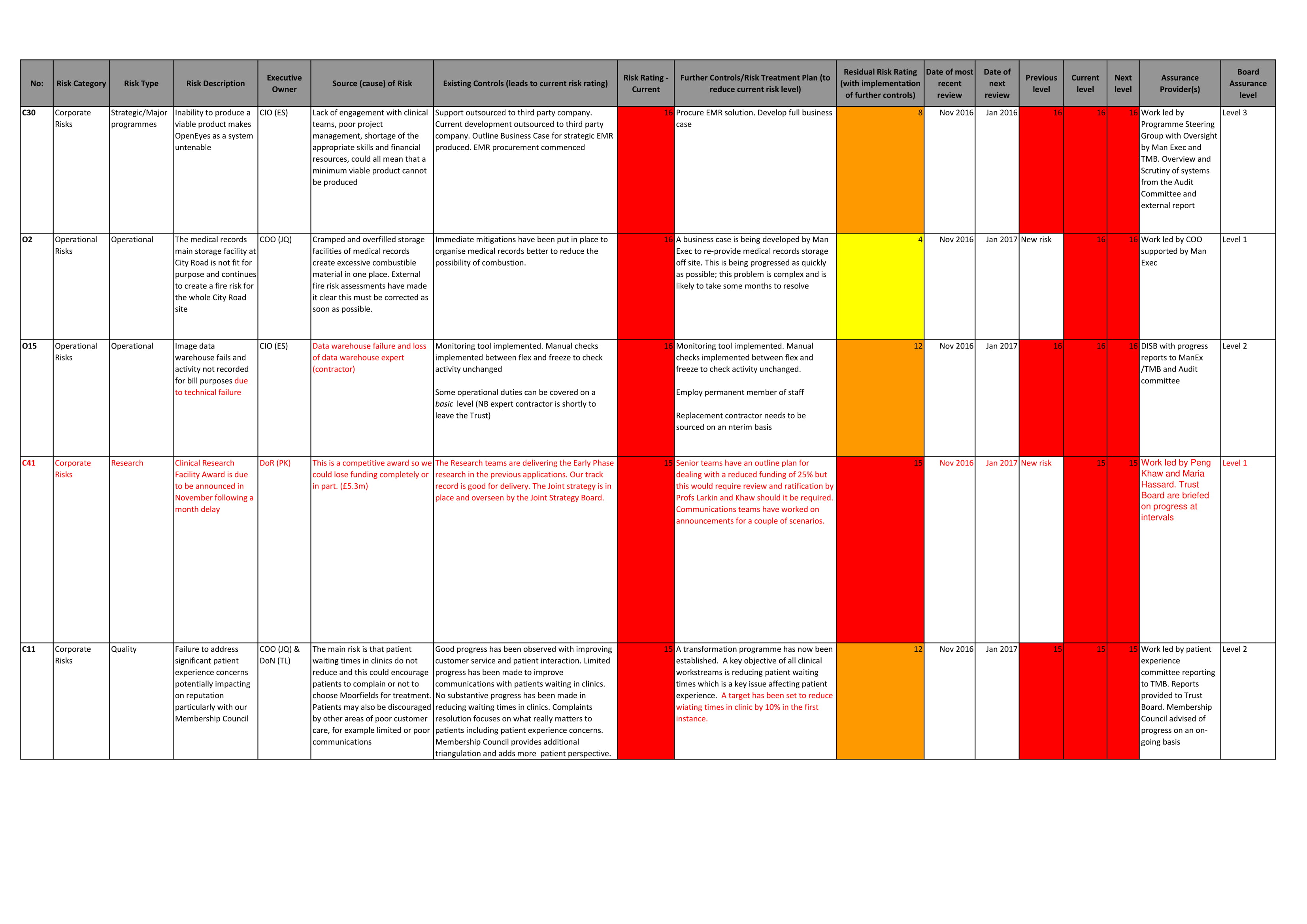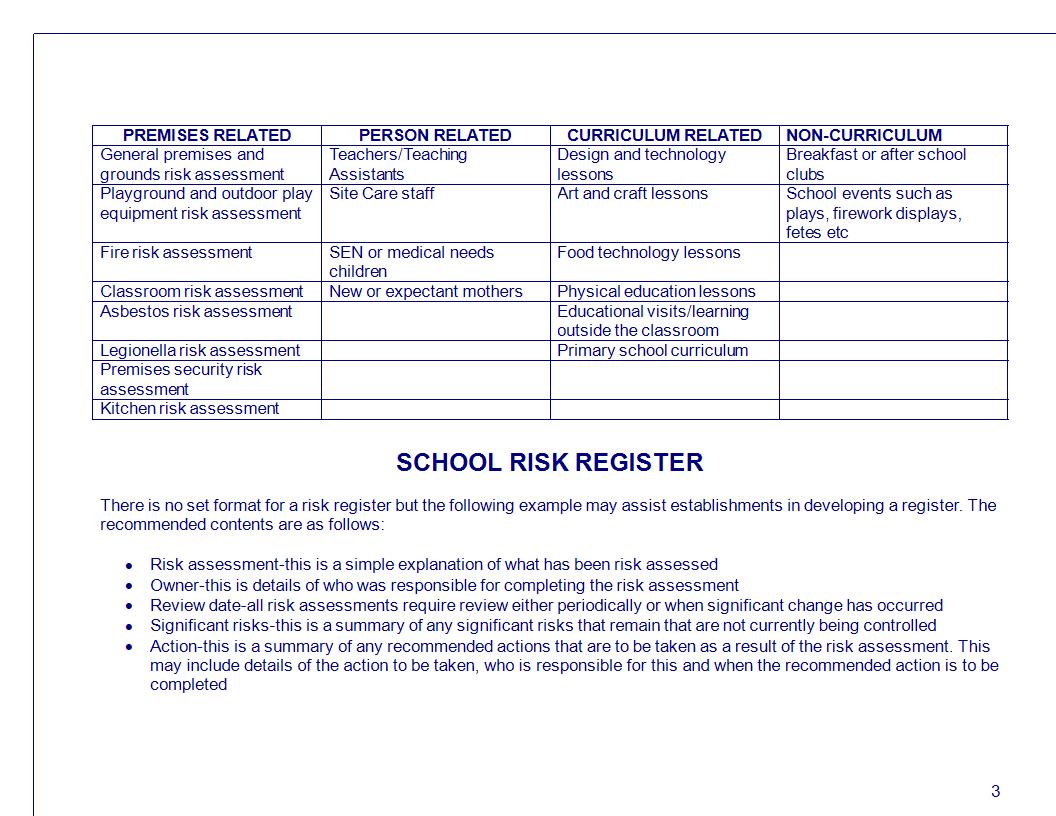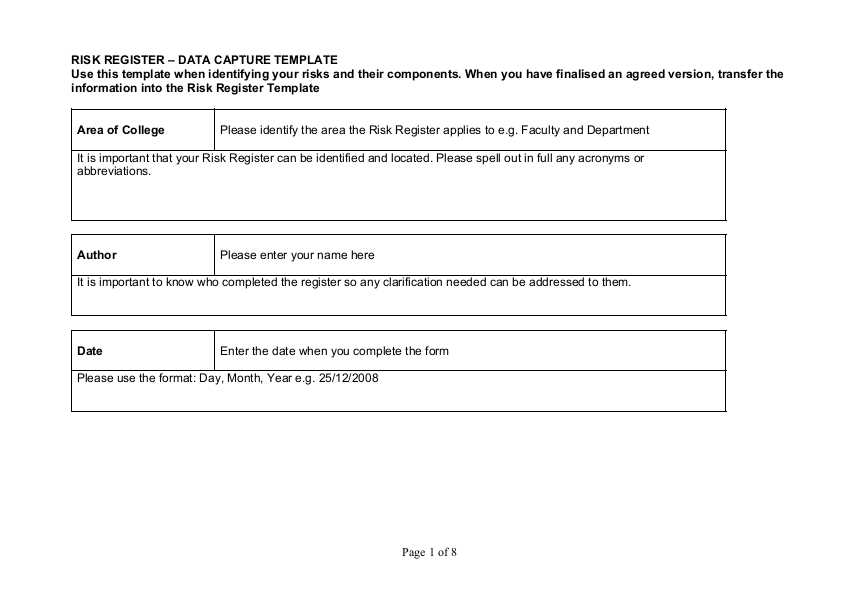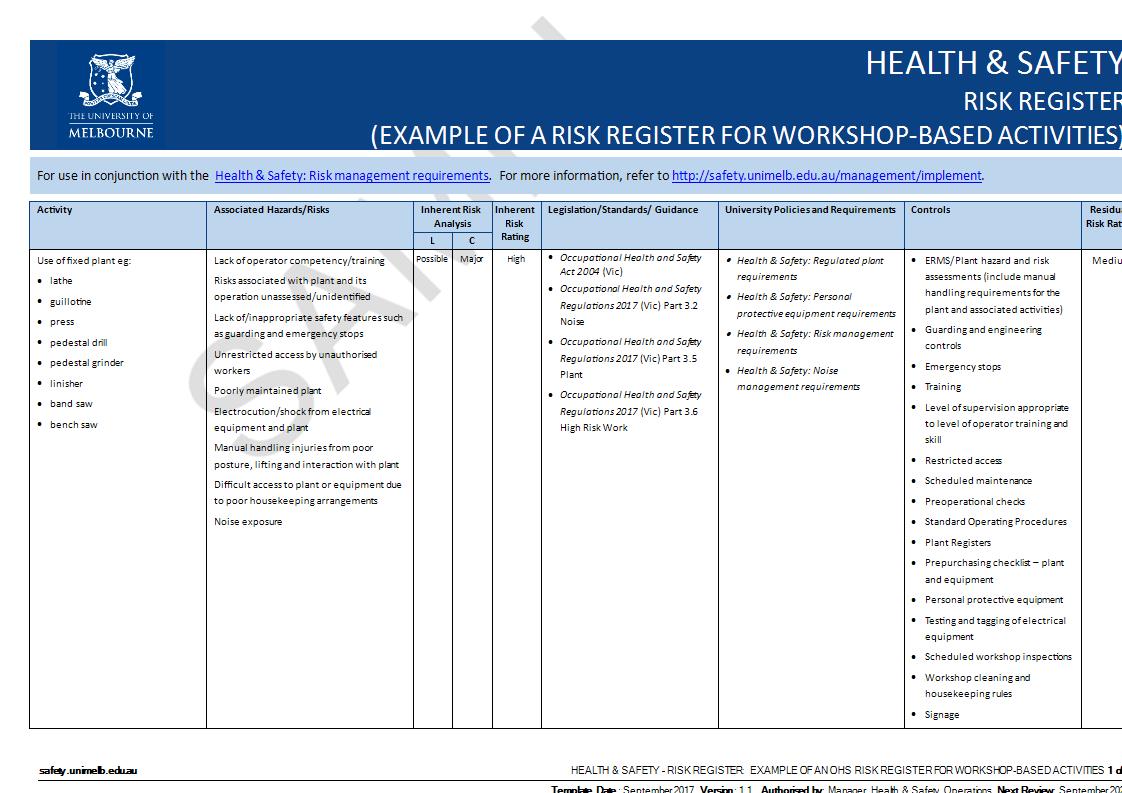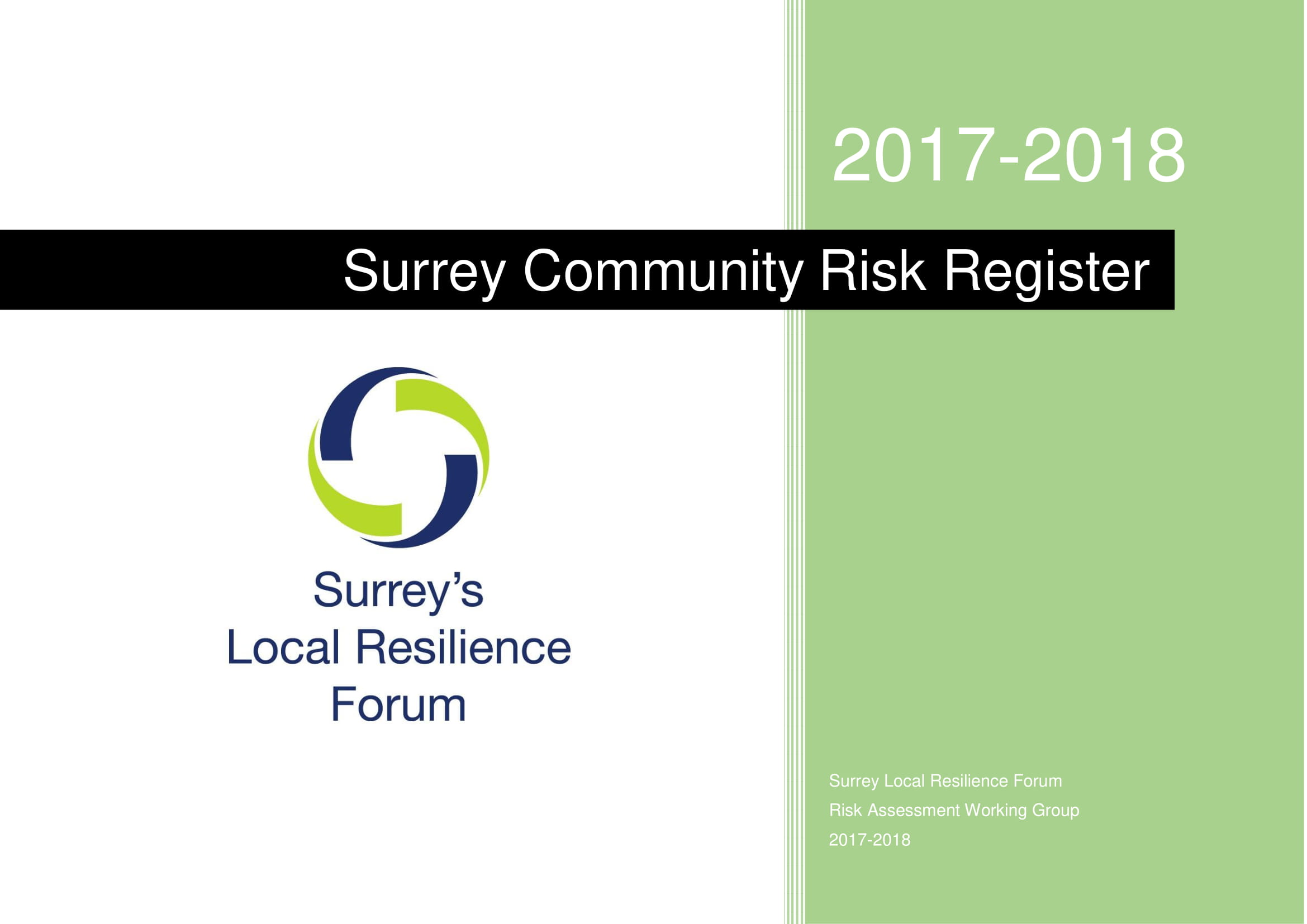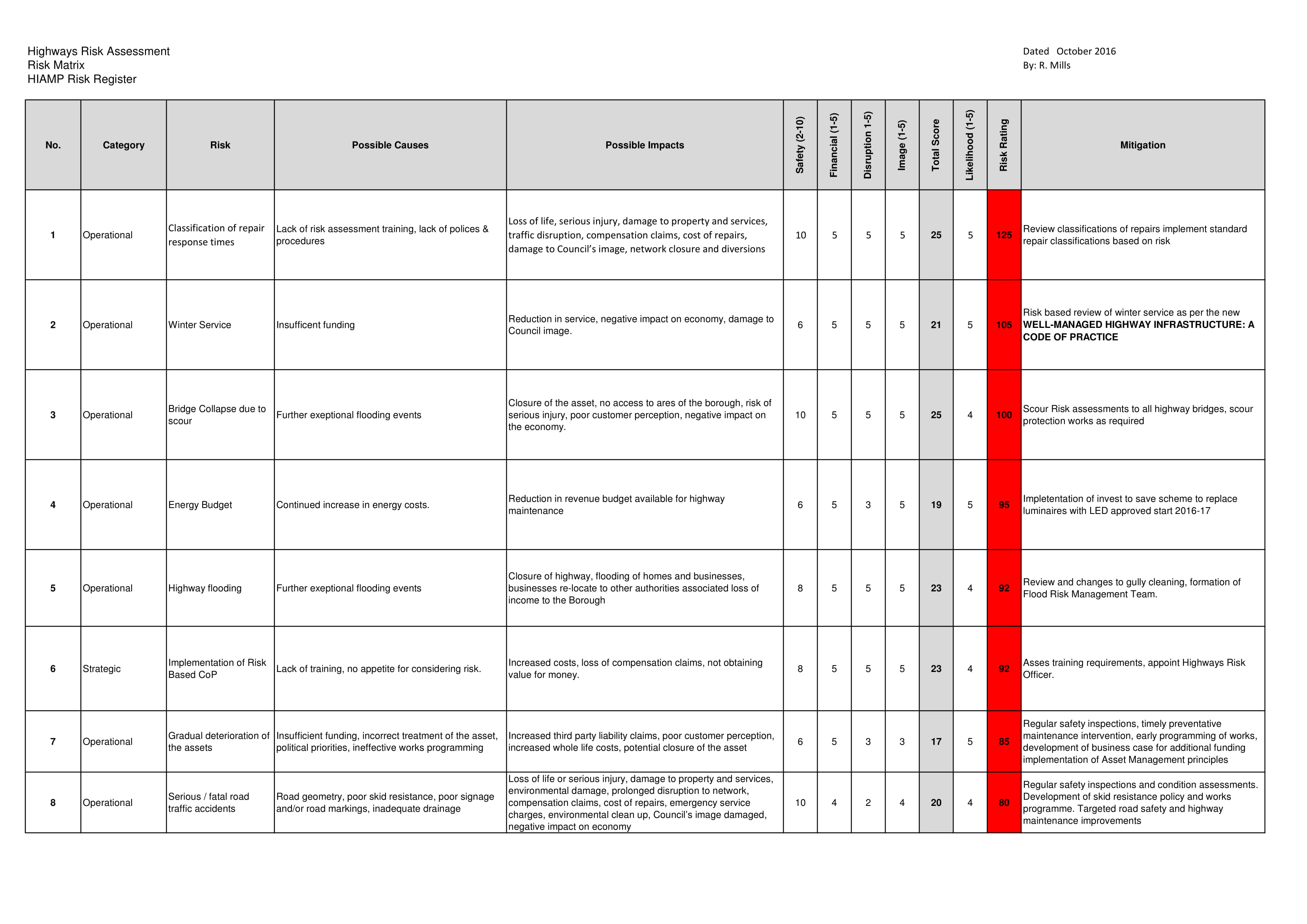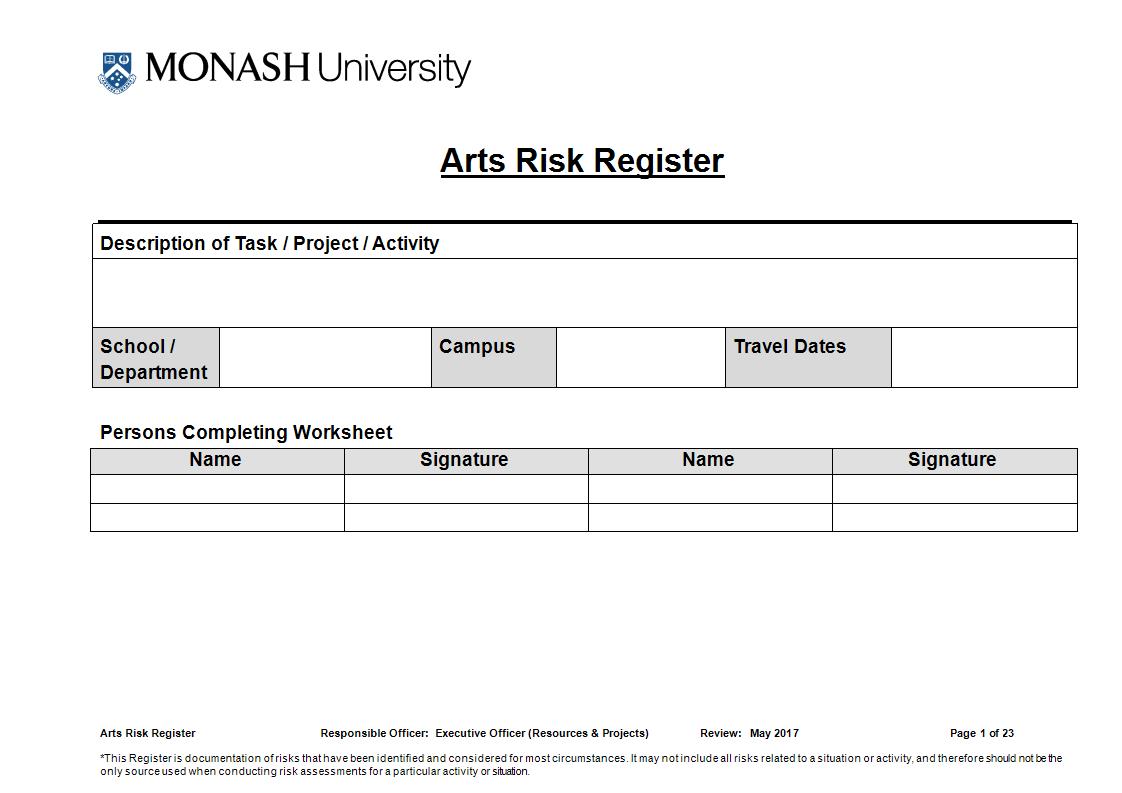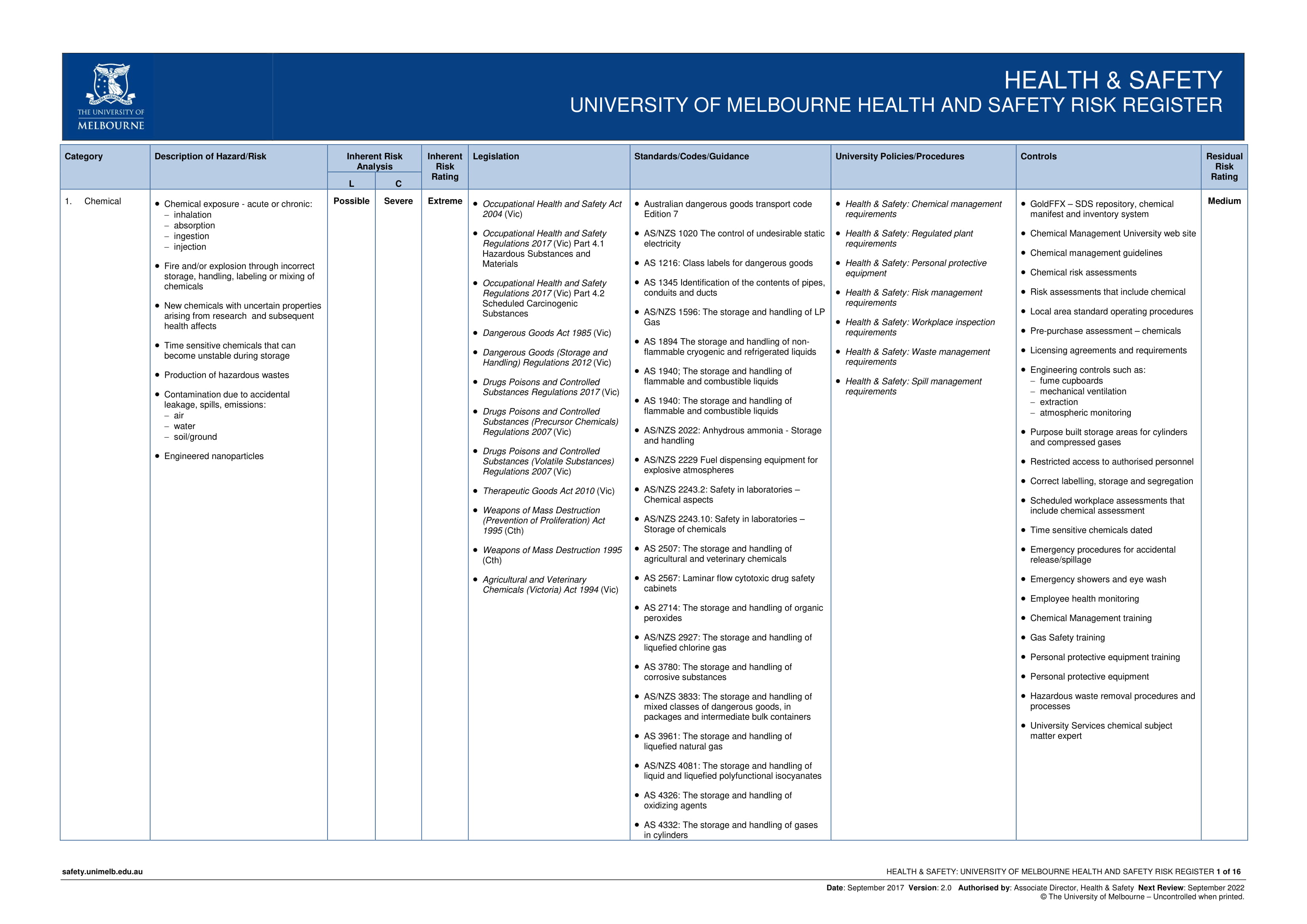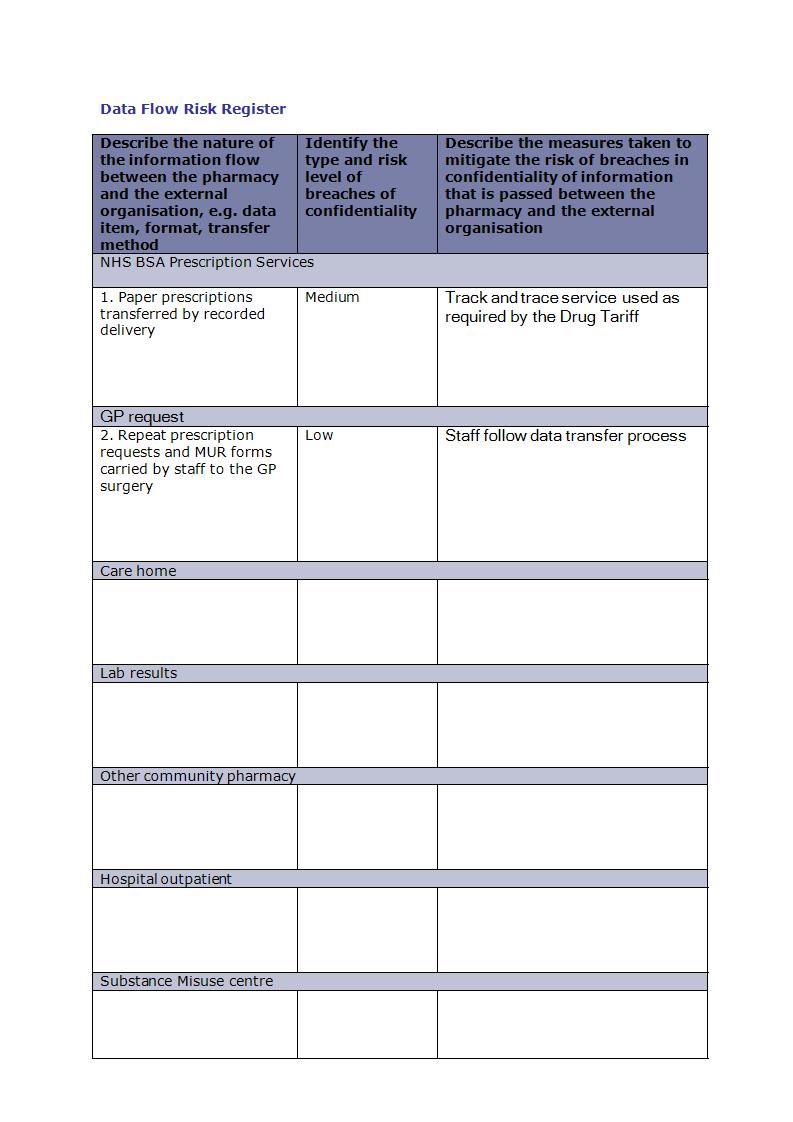46+ Risk Register Examples to Download
In a company, organization, event, project, and even in schools and the government, there is always a need to prepare for unpleasant circumstances. Although some issues or risks are unpredictable, people in charge of managing such businesses or events need to prepare preventive actions and solutions to take in case such circumstances ever occur. It is part of every company or institutions to have a risk management plan that enables them to foresee risks, estimate impacts, and define responses to issues. It is their cautionary method that will help them decide on what to do if ever a risk occurs.
Upon completion of a risk management plan, it is important that you create a tool you can use to record identified risks, their severity, and the actions or steps needed to be taken. It can come into various forms such as a simple document, spreadsheet, or a database system where you will be able to list down what has been mentioned before. The document or tool you decide to use will help you review and update the process that identifies, assesses, and manages risks down to acceptable levels. This guide is here to discuss the said tool in details so that you can have enough knowledge in creating one should you need it.

What Is a Risk Register?
A tool commonly used in risk management and project management. A risk register, also called a register log is created on the early stages of a project. It is an important document in your risk management plan; it enables you to identify potential risks in a project or an organization and at the same time, it helps you record and track issues and address problems as they arise. Although it is sometimes created just to fulfill regulatory requirements, it is a necessary tool to keep on top of potential issues that can deter you from your intended outcomes.
A risk register includes all relevant information about every risk that has been identified, from the nature of that risk to the level of risk to who owns it and down to what mitigation measures that have been put in place to respond to it. Generally, a risk register is shared between project stakeholders. It allows all of those involved in the project to be kept aware of issues and as well as providing a means of tracking the response to those issues. It can also be used to flag new project issues and also to give suggestions on what course of action is suitable to solve them.
As you may know, corporate and organizational projects may face risk at a certain point in time, a risk register provides better way and means to respond or address certain issues should they arise. Overall, a risk register is a useful tool that can help in the whole decision-making process and enables managers and project stakeholders to address issues in the most appropriate and effective way. Since a risk register contains all information about identified project risks, analysis of the severity of such risks and evaluations of the possible effective solutions to apply, people involved in the project can have a guarantee that issues can be resolved as quickly as possible.
It is imminent to have some sort of risks arise during the implementation of a project, however, these risks need not be a threat to the success of the project. Risks are simply issues that can arise during a project, if properly determined in advance, solution can also be determined. Therefore, risks can be resolved more efficiently and effectively with the use of the proper tools such as a risk management plan and a risk register.
ISO Risk Register Template
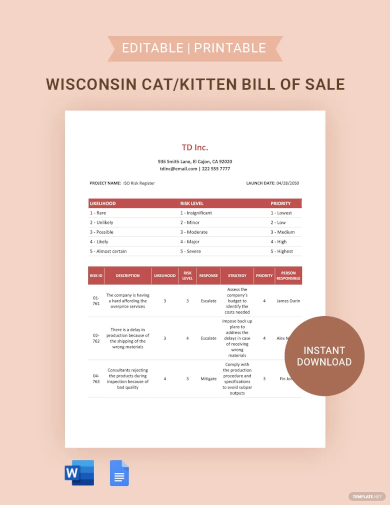
HR Risk Register Template
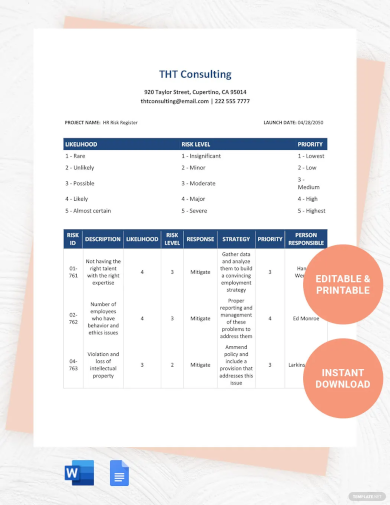
Tax Risk Register Template
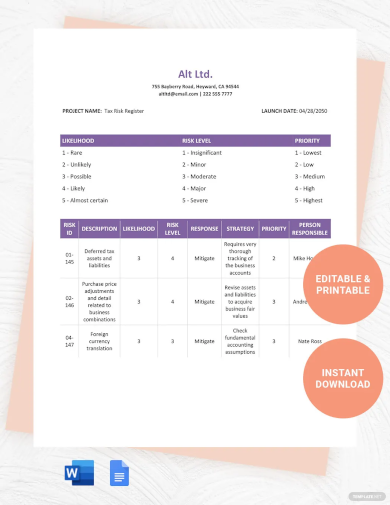
Internal Audit Risk Register Template
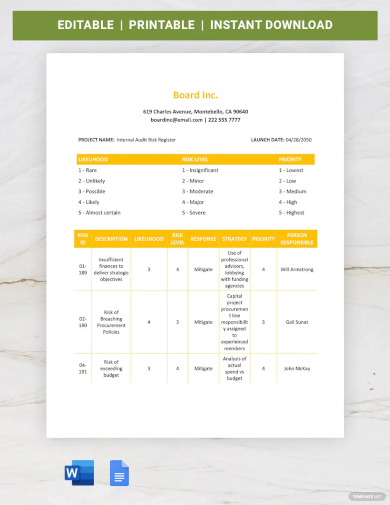
Vulnerability Management Risk Register Template
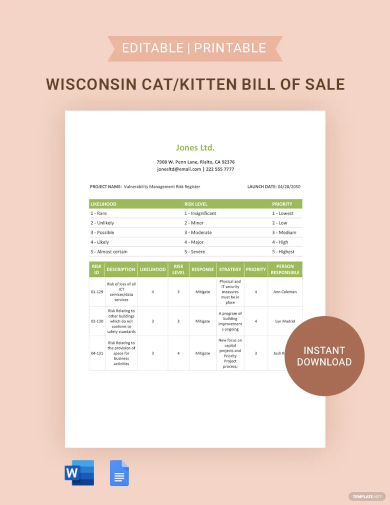
University Risk Register Template
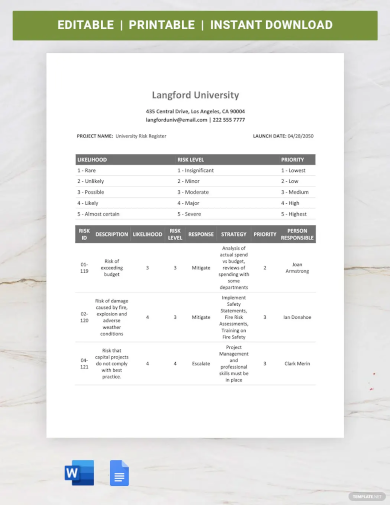
Organisational Risk Register Template
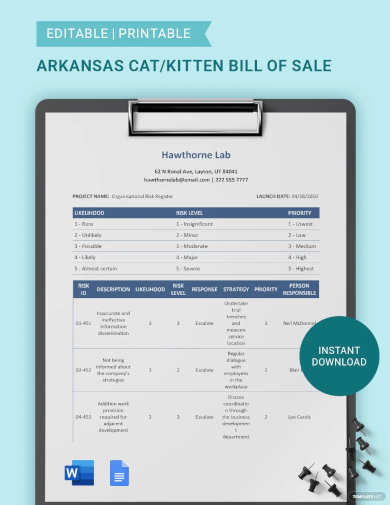
Data Protection Risk Register Template
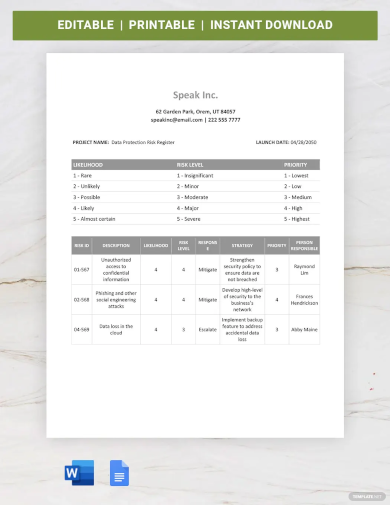
Financial Risk Register
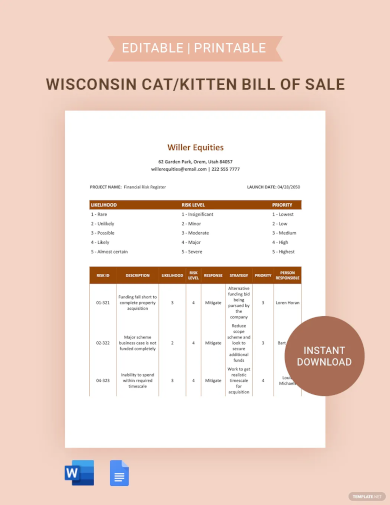
Building Risk Register Template
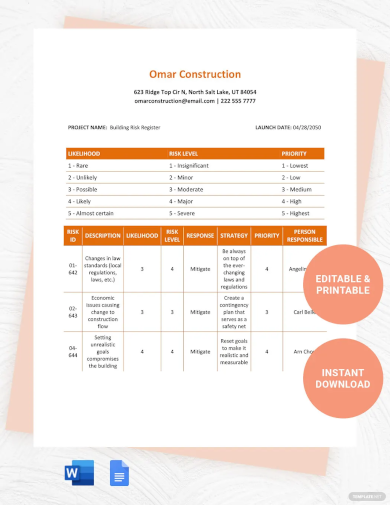
Strategic Risk Register
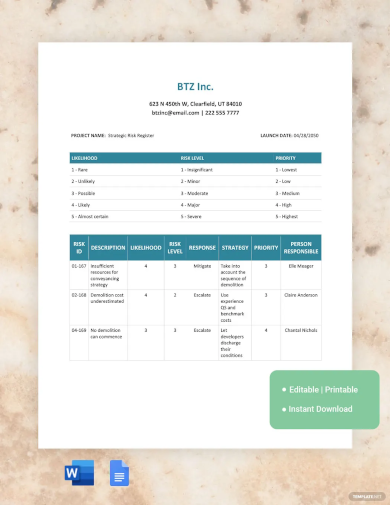
PMI Risk Register Template
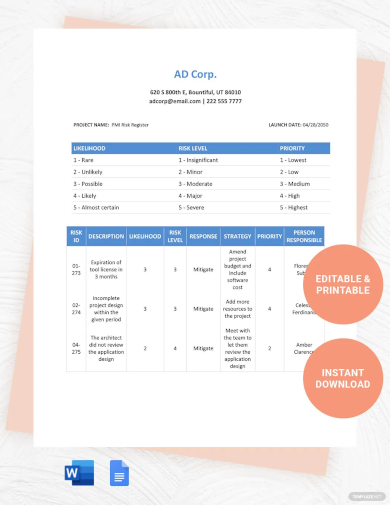
Corporate Risk Register
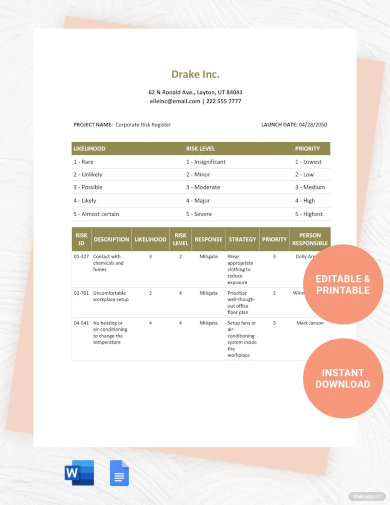
Operational Risk Register Template
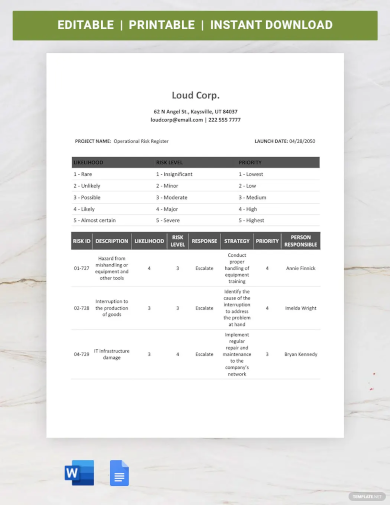
Security Risk Register
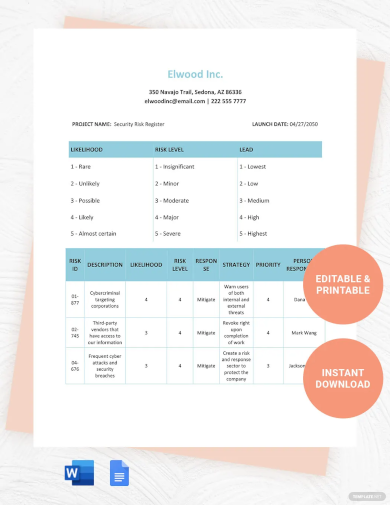
Construction Project Risk Register Template
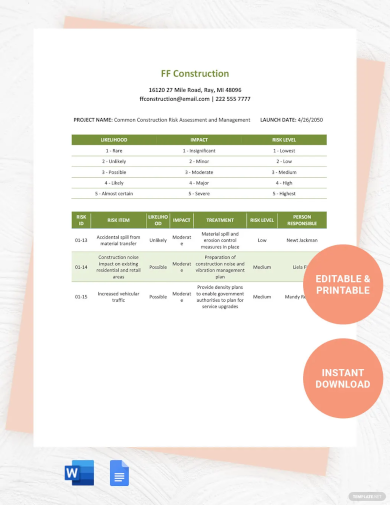
IT Project Risk Register Template
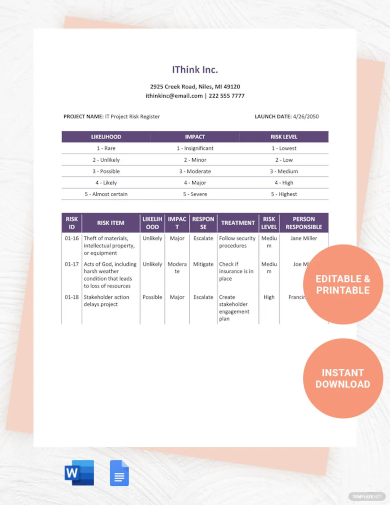
Simple Risk Register Template
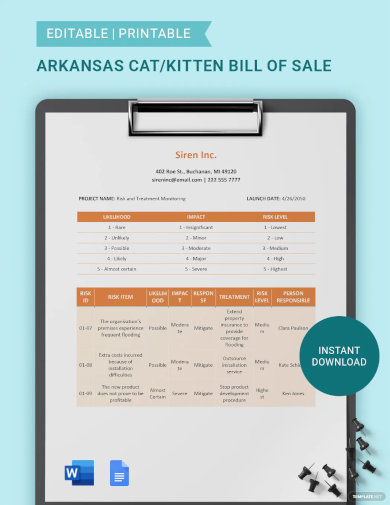
Quality Risk Register Template
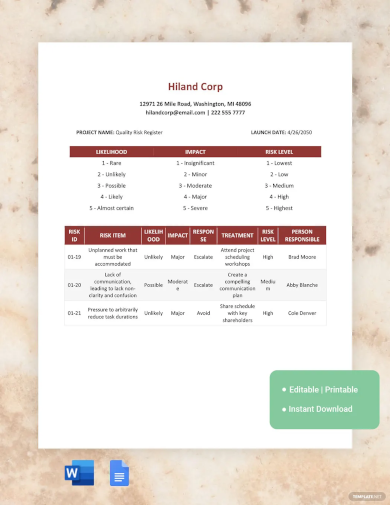
Charity Risk Register
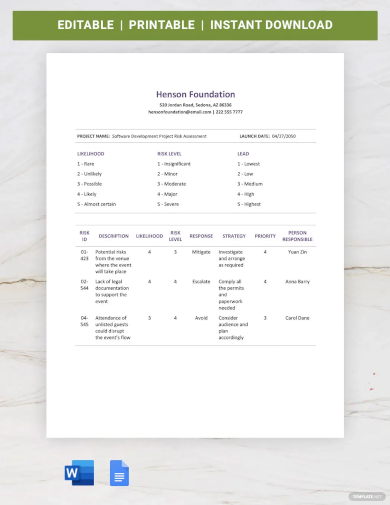
Risk Register Example
Project Risk Register Template and Guide Example
Project Risk Register Example
Risk Register Template Example
Basic Risk Register Example
Joint Strategic Risk Register Example
Why Use a Risk Register?
When making a risk management plan, you don’t just foresee potential risks, you also need to strategize and choose the most cost-effective solution to each risk. In that case, you need a tool that will enable you record these potential risks and enable you to map out the best way to push the project back on track should those identified potential risks arise in real life.
With that in mind, you need to identify potential risks first. Although there can be different risks for different types of projects, you should be able to clearly identify the risks that could arise on your project at hand. In addition, in a company that performs projects of almost the same nature, there may be historical data that can be reviewed to help you identify the common risks that arise on those types of projects. You can also effectively anticipate risks based on the market forces, for example, supply and demand, or based on the most common staffing or personnel issues, or even based on the weather where the project is to be implemented.
The project risks register is a systematic approach that will help you track the risks you have identified beforehand if ever it actually arise and evaluate the actions you have already set to resolve such risks. If you have already established a risk register be it in a spreadsheet, table, or a project management software, you can easily register these risks and put all the information relevant to these risks; you can then easily track these risks as well as the actions/solutions you have put in place to solve the risk if they are working or not.
Therefore, since a risk register is a risk tracking document, you have a clear vision on how these risks move and respond to the actions you have set. You have full control on how these risks can affect your project. Since the risk register gives you all the information about these risks, you also have the full disclosure on how to solve them; if the actions you have set are unsuccessful in solving the risk, you can immediately see it in your register. Thus, helping you decide on what is the best next step to take in order to preserve your project.
Corporate Risk Register Template Example
Generic Risk Register Template Example
Risk Register and Issues Log Example
Simple Risk Register Example
Community Risk Register Example
What Does Risk Register Do?
As you may now know, a risk register will help you record the potential risks that can arise in a project as well as track those risks should they become reality. Aside from its general purpose, what else does a risk register do? Here is a breakdown of all the things a risk register does:
1. Identify
The first thing your risk register does is identify the potential risks. Since you have to input the potential risks that can arise in your project, you also have to identify those risks. Together with the the team involved in the project, you have to brainstorm in identifying the risks. Since the individuals in your team is in charge of different aspects of the project, they can easily determine if such a risk can arise on that aspect. You also have to consult the project stakeholders to make sure you include their concerns and track their risks.
In addition, you have to realize that the size of your risk register will most likely depend on the complexity of your project, you have to make sure you and your team exhaust all areas of potential risks so that there won’t be any unwelcome surprises.
2. Describe
Your risk register will also let you vividly describe the potential risks you have identified. The thorough description of each potential risk will help you prepare should it arise. Aside from that, being too vague on the description of what the risk could entail will result to you and your team having a hard time identifying if the risk has become a reality. In addition, the capacity of the risk register to clearly and thoroughly describe each risk will result to having the appropriate and most effective actions to help solve such risks, thus, preventing it from becoming the reason for the failure of the project.
3. Measure
The risk register will also let you measure the severity of the impact of each risk. Since you have effectively identified the potential risks that can affect your project and you have thoroughly described each risk, you can then proceed to measure how much of an impact each risk can bring to your project should they become realities. You can foresee the damage it can bring should it be not effectively resolved. Including all the details relevant to the impact a risk can influence your project will let you determine and measure the impact it can bring to your project. Aside from that, it will let you know which risks should be addressed as soon as possible with regards to their severity.
4. Respond
Since you have a clear idea on the severity of the impact a risk can bring to your project, you will also have an idea how to effectively respond to it. You will have the knowledge on what actions are the most appropriate to take. In addition, you will also be able to choose the most cost-effective and efficient actions to help solve the issue brought about by the risk. This will make sure each risk is given the appropriate action based on its description and impact. Your risk register will be able to help you with this since a column is made especially for the actions needed to handle each risk.
5. Prioritize
As mentioned earlier, the severity of the impact brought about by each risk will hep your prioritize which risks to handle first. Since you will be determining the level of each risk from high, medium to low, you will be able to clearly identify which risks to address first. You have to bear in mind that you have limited time and resources when you are implementing a project, therefore, you have to be able to know which risks are okay to set aside and which to put in front. Your risk register will give you the opportunity to review the aspects that will help you decide which risks to prioritize and which to handle when there is enough time and resources.
6. Assign
When implementing a project, you assign different people depending on their expertise on the various aspects that a project consists. This will also be the case in assigning risks in your risk register; the person more accustomed and originally assigned on that aspect of the project should also be in charge of handling the risks that may or has occurred on that end. This is a very valuable capacity that a risk register allows you to do; if there is no person in charge of handling each potential risk, you may not know about the occurrence of such risk until it becomes unsolvable and irreversible.
7. Note
Your risk register will also allow you to note the information that may not fit under the categories that may be in your risk register. It will allow you to list the information that you may think is relevant and important in the risk management of your project but simply does not belong in the other categories. Should the need for such information come, you can easily review your risk register.
Risk Management Plan and Register Example
Risk Register Report Example
Example of Primary Risk Register for Maynooth University
Usable Risk Register Template Example
Public Service Risk Register Example
Components of a Risk Register
There is no standard list of components that needs to be included in a risk register; however, there are recommendations from the Project Management Institute Body of Knowledge and other organizations. The components of your risk register will depend on the nature of your project as well as the concerns of your company or organization. Here is a list of some of the most common components found in a risk register:
- Dates – A risk register is considered as a living document or a document that is continuously edited and updated, therefore, the date/s when the last edit or update was made should always be indicated. It is very important that the dates when the risk was identified or modified is recorded so that it is easier to review the document. It will also be easier to determine when was the last update of the document was made. Other optional dates to include in your risk register can be the target and completion dates.
- Description of the Risk – As discussed earlier, a risk register will allow those involved to describe the risks that could arise during its implementation. Since people in charge of three different aspects has a say on what risks can arise on their end, they can also effectively describe what the risk entails. The description of the risk will also help you determine the appropriate action/s to take in order to solve such risks should they actually arise. The description should be clear and descriptive so that you can easily determine if it actually occurs and so that you can efficiently set it apart from other risks.
- Risk ID – This is a unique identification number that is used to identify the risk. It is also used to efficiently track the risk in the risk register. For example, if the risk is about operations and the Operations team is identified as Category 5, the first risk in this category is identified through its unique number as 5.1.
- Risk Type (business, project, stage) – This pertains to the type the identified potential risk belongs to. A business risk relates to the delivery of achieved benefit; the risks related to the management of the project such as time frames and resources are called project risks, and risks associated with a specific stage of the plan are called stage risks.
- Likelihood of Occurrence – This component of the risk register provides an assessment of how likely the risk will occur. This means you have to assess and determine the chances of the risk ever occurring during your project. This can be qualitatively determined by using the high, medium, and low scale.
- Consequence – The consequence of each risk should they become real project issues are listed on here. You can also qualitatively identify the consequence for each risk by labeling them from high to low.
- Severity of Effect – This means the magnitude of the impact each risk has over your project. You need to be able to provide a clear assessment of the impact on the project should the risk occur.
- Countermeasures – The actions that needs to be taken in order to resolve the risks should they become realities are indicated in this part of the risk register. All the necessary actions to be taken to prevent, reduce, or transfer the risk is listed as countermeasures. In addition, this may include production of contingency plans.
- Owner – The owner pertains to the individual assigned to ensure that the risks are appropriately and properly handled, this also means that he/she is responsible for making sure that the right countermeasures are given to each risk or issue.
- Status – The status part of the risk register indicates whether the risk is current or if the risk can no longer arise along with the impact of the project. Some risk register use the markers such as C for current and E for end to each identified risk.
It is important to remember that what has been listed here as the components of a risk register are only some of the possible components. There can be other components or elements such as Risk Trigger, Residual Risk, Existing Controls, Inherent Rating, etc. It is only up to the project managers and the others involved to decide what other components or elements they think is appropriate to include in their risk register.
Event Risk Register Template Example
Hospital Corporate Risk Register Example
School Risk Register Example
Strategic and Operational Risk Register Example
Risk Register – Data Capture Template Example
Workshop-Based Risk Register Example
Surrey Community Risk Register Example
How to Create a Risk Register
After all that discussions, this part of the guide will now teach you how to create a strong risk register. There are three necessary steps in creating a strong and effective risk register:
1. Risk Identification
Depending on what you are used to, there can be quite a few ways to effectively identify a risk in a project development and implementation. Here are some of the most important techniques you can apply to develop a listing of risks:
- Brainstorming – Brainstorming means focusing on quantity over quality regardless if you are working alone or in a group. An easy way to do this is by writing everything you can think of on paper, and narrowing it down after a thorough discussion and dissection of the list.
- Subject matter experts – It is best to have experts regarding the subject matter advise you of the risks involved with the work. Although they might belong to other departments, their advice is still second to none.
- Checklists – There are generic checklists and there are customized checklists. It is best to develop a specific checklist that best fits your organization and/or type of project you are implementing.
- Lessons learned – As they say, “history repeats itself,” thus it is an invaluable tool to keep a collection of the lessons you have learned during an implementation of a closely similar project. Your database can include a collection of project summaries, a record of all the problems that you have encountered, the mistakes made, and what would the project manager do differently in future projects.
- Documentation review – This means you have to learn about the project, the technical details, and its people. You have to review the project to know what possible risks can arise and how to effectively prevent or solve them.
- SWOT Analysis – A Strengths-Weaknesses-Opportunities-Threats analysis will help you draw out the risks inherent to the project. New risks can be drawn out of the Weaknesses and Threats quadrants.
- Delphi technique – This involves questioning a group of people or subject matter experts, then letting them revise their original answers after sharing it anonymously. A consensus should be develop after several rounds.
- Assumptions analysis – Identifying the underlying assumptions, and analyzing their reliability, will give you the identification of new risks.
- Influence Diagrams – One way of generating important risks is by drawing out a simple decision network for the major turning points within a project.
2. Risk Analysis
- Qualitative Analysis – A qualitative analysis involves assigning each risk in the register a probability and impact score. Since a risk basically has two components probability and impact, through a qualitative analysis you can give each risk in both categories a score of 1–10 or A–E if you are currently handling small projects. For larger projects, it may be from 1–100 and the actual impact on the project; this can be of monetary value, schedule impact, or whatever the actual impact is.
- Quantitative Analysis – Quantitative analysis involves the use of analytical tools to determine the effect of the risk on the project. After each risk is given a probability and impact score, it is analyzed and compared to the other risks so that prioritization is determined. Depending on how you and your colleagues in charge of the project decide on how to compute for the overall prioritization of each risk, it will give you a clear ranking of priority that each risk should be treated accordingly.
3. Risk Response Plans
The last step in making a risk register is developing the risk response plan. There are several ways to react if a risk ever occurs during your project. Here are some ways to respond to risks identified in a risk register:
- Avoid – As blatant as what the words means, in risk management it means you eliminate the threat from ever occurring or to protect the project from its impact. For example:
- Revise the scope of the project.
- In order to eliminate a risk of timely project completion, extend the schedule.
- Change project objectives.
- One way of eliminating ambiguity and misunderstandings is to clarify the project requirements.
- Technical risks can be removed by gaining expertise on a specific aspect of the project.
- Transfer – This means that a third party is given the responsibility in handling the impact of a certain risk. The use of insurance, warranties, or performance bonds may be referred to as direct methods, while unit price contracts instead of lump sum (or vice versa depending on which side of the contract you’re on), legal opinions, and so forth are called indirect methods.
- Mitigation – Since some risks are inevitable and unavoidable, your only option may be to reduce the the probability or impact of the risk. Although this option is not always possible and often comes with a price that should be balanced against the value of performing the mitigating action, it will still help you in your risk management.
- Accept – All projects have risks, although some can be avoided, there will still be other risks that can affect your project. Therefore, it is important that project stakeholders accept certain risks. Risk acceptance can be passive; consequences are dealt with after the risk occurs, but can also be active, whereby contingencies (time, budget, etc.) are already allotted in advance to allow for the consequences of the risk to the project.
Highways Risk Register Example
Arts Risk Register Example
Health and Safety Risk Register Example
Pharmacy Data Flow Risk Register Example
Conclusion
A risk register is a useful and effective tool that can help those involved in a project have the right mind-set when dealing with risks during the course of the project. Since a risk register contains all information pertaining to potential risks that may arise, it can help the people involved decide on what the appropriate actions should be taken in order to solve such risks. We hope that you learned about risk registers with the help of this guide, and may you find use with the given examples.



